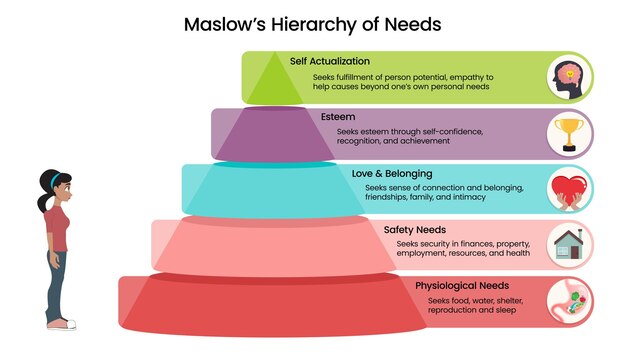How Cognitive Behavioral Therapy (CBT) Techniques can be Applied in 3 Settings?

Cognitive Behavioral Therapy (CBT) holds immense significance in the field of counseling and therapy due to its evidence-based approach and effectiveness in treating a wide range of mental health issues. One of the key strengths of CBT lies in its focus on the interplay between thoughts, emotions, and behaviors, empowering individuals to identify and challenge negative patterns that contribute to their distress. By teaching clients practical skills and strategies to manage their symptoms and cope with life’s challenges, CBT equips them with invaluable tools for navigating difficulties and improving their overall well-being. Moreover, CBT’s structured and goal-oriented nature makes it particularly well-suited for brief, time-limited interventions, allowing clients to experience meaningful improvements in a relatively short period. As a result, CBT has become a cornerstone in counseling and therapy, offering hope, empowerment, and lasting change to countless individuals seeking relief from mental health concerns.

Page Contents
- 1 How Cognitive Behavioral Therapy (CBT) Techniques can be Applied in 3 Settings?
- 2 Cost of Cognitive Behavioral Therapy (CBT)
- 3 The cost of Cognitive Behavioral Therapy (CBT) can vary depending on several factors, including the therapist’s qualifications, location, experience, and the specific treatment plan tailored to the client’s needs.
- 4 Here are some 7 considerations regarding the cost of CBT therapy:
How Cognitive Behavioral Therapy (CBT) Techniques can be Applied in 3 Settings?

Here are examples of how Cognitive Behavioral Therapy (CBT) techniques can be profoundly applied in 3 varying settings namely the Corporate settings, Business environments, and for Soldiers experiencing trauma:
- Corporate World:
- Example 1: Stress Management Workshops: A multinational corporation implements stress management workshops for its employees, teaching CBT-based techniques such as mindfulness meditation, cognitive restructuring, and time management skills. Employees learn to identify and challenge negative thoughts about work-related stressors, develop healthier coping strategies, and improve their overall well-being and productivity.
- Example 2: Performance Coaching: A sales team undergoes performance coaching sessions that incorporate CBT principles to enhance their sales skills and mindset. Through cognitive restructuring, team members learn to challenge self-limiting beliefs about their abilities, develop confidence-boosting techniques, and adopt a growth-oriented mindset to overcome sales challenges and achieve greater success.
- Example 3: Conflict Resolution Training: A company invests in conflict resolution training for its managers and employees, incorporating CBT techniques to improve communication and interpersonal skills. Participants learn to recognize and challenge cognitive distortions that contribute to workplace conflicts, practice active listening and assertiveness, and negotiate win-win solutions to resolve disagreements effectively, fostering a more harmonious and productive work environment.
- Business Setting:
- Example 1: Leadership Development Program: A startup company implements a leadership development program for its managers, integrating CBT strategies to enhance leadership skills and emotional intelligence. Managers learn to recognize and regulate their emotions, practice effective problem-solving and decision-making techniques, and cultivate a supportive and motivating work culture that fosters employee engagement and organizational success.
- Example 2: Entrepreneurial Coaching: An aspiring entrepreneur receives entrepreneurial coaching that incorporates CBT techniques to address mindset barriers and enhance business performance. Through cognitive restructuring, the entrepreneur learns to overcome self-doubt and fear of failure, develop resilience in the face of setbacks, and adopt a proactive approach to goal-setting and strategic planning, leading to increased confidence and success in their business ventures.
- Example 3: Team Building Retreat: A marketing agency organizes a team-building retreat for its staff, incorporating CBT-based activities to improve team cohesion and collaboration. Team members engage in experiential exercises that promote trust and communication, identify and challenge cognitive biases that hinder teamwork, and develop strategies for resolving conflicts and achieving shared goals, resulting in a more cohesive and high-performing team.
- Soldiers Trauma:
- Example 1: Military Resilience Training: Military personnel undergo resilience training programs that incorporate CBT techniques to address trauma-related symptoms and promote psychological well-being. Soldiers learn coping skills such as grounding techniques, emotion regulation strategies, and cognitive restructuring to manage stress, reduce symptoms of PTSD, and enhance resilience in the face of combat-related trauma.
- Example 2: Trauma-Focused Therapy: Soldiers returning from deployment receive trauma-focused therapy that integrates CBT principles to process traumatic memories and reduce symptoms of PTSD. Through exposure therapy and cognitive restructuring, soldiers confront and reframe distressing memories and beliefs associated with their combat experiences, leading to decreased emotional distress and improved functioning in civilian life.
- Example 3: Peer Support Groups: Military units establish peer support groups for soldiers to share their experiences and receive mutual support in coping with trauma-related stressors. Group members learn CBT-based coping skills from trained facilitators and fellow soldiers, such as thought challenging, relaxation techniques, and problem-solving strategies, fostering camaraderie and resilience within the unit.

Cost of Cognitive Behavioral Therapy (CBT)
The cost of Cognitive Behavioral Therapy (CBT) can vary depending on several factors, including the therapist’s qualifications, location, experience, and the specific treatment plan tailored to the client’s needs.


Here are some 7 considerations regarding the cost of CBT therapy:
- Therapist Fees: CBT therapists typically charge for their time per session, which can range from $50 to $250 or more per hour, depending on factors such as their credentials, expertise, and geographic location. Therapists with advanced degrees and specialized training may charge higher fees.
- Session Duration: CBT sessions typically last between 45 to 60 minutes, although some therapists may offer longer sessions. The duration of each session can impact the overall cost of therapy.
- Frequency of Sessions: The frequency of CBT sessions can vary depending on the client’s needs and treatment goals. Some clients may attend therapy sessions weekly, biweekly, or on a less frequent basis. The number of sessions required can affect the total cost of therapy.
- Insurance Coverage: Many health insurance plans provide coverage for CBT therapy as part of mental health services. Clients with insurance may be responsible for copayments, coinsurance, or deductibles, depending on their plan. It’s essential to check with the insurance provider to understand coverage and any out-of-pocket expenses.
- Out-of-Pocket Expenses: Clients who pay for CBT therapy out-of-pocket, without insurance coverage, will be responsible for the full cost of each session. Some therapists offer sliding scale fees based on income level or financial need to make therapy more accessible to clients with limited financial resources.
- Group Therapy: Some therapists offer CBT in a group therapy format, which may be more cost-effective than individual therapy sessions. Group therapy allows clients to benefit from shared experiences, support, and feedback from peers while reducing the overall cost of therapy.
- Nonprofit Organizations and Community Mental Health Centers: Nonprofit organizations and community mental health centers may offer CBT therapy at reduced or no cost for individuals with financial need. These organizations often provide sliding scale fees or free services to ensure access to mental health care for all individuals, regardless of their financial circumstances.
Overall, the cost of CBT therapy can vary based on individual factors and circumstances. Clients should discuss fees and payment options with their therapist to ensure that therapy is accessible and affordable for their specific situation. Additionally, clients may consider the long-term benefits of CBT therapy in terms of improved mental health and well-being when evaluating the investment in their treatment.
These varying examples in different settings profoundly demonstrate how CBT techniques can be adapted and applied in diverse contexts, from corporate settings and business environments to military situations involving trauma, to promote psychological well-being, enhance performance, and foster resilience.







